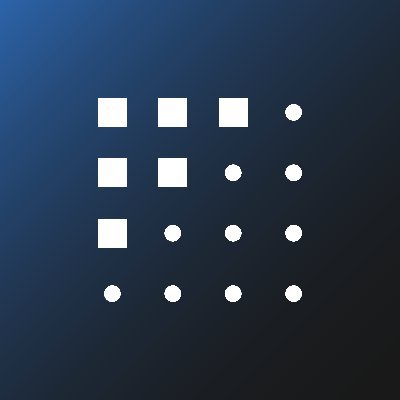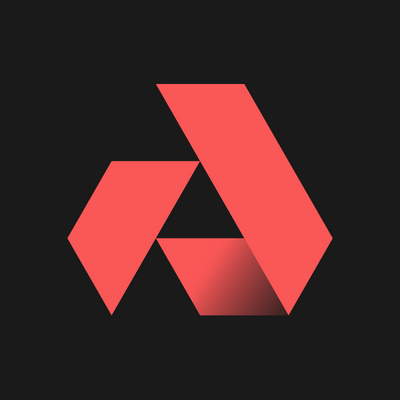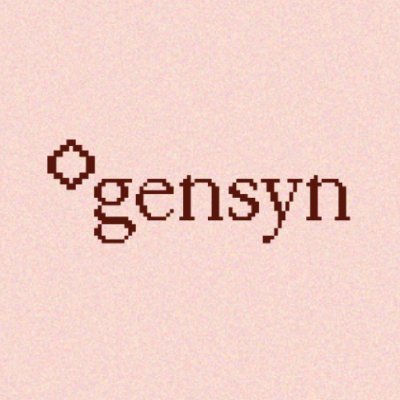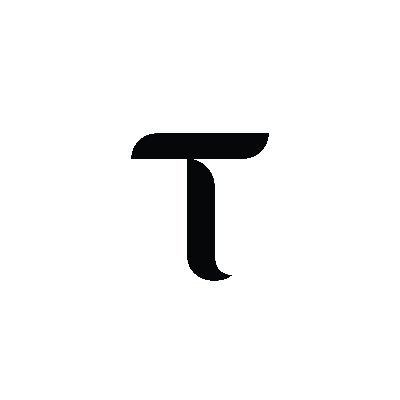Which projects combining crypto and AI can help break the monopoly barriers of AI?
Author: Reflexivity Research
Compiled by: Shenchao TechFlow
Recently, the artificial intelligence industry has been making headlines for both good and bad reasons. While you may be aware of recent events related to OpenAI and have explored the current level of artificial intelligence technology, you might not understand how artificial intelligence interacts with blockchain. In this week's report, we will introduce some applications that attempt to combine artificial intelligence and blockchain technology, as well as information about these applications and the artificial intelligence industry in the coming years.
What is Artificial Intelligence? How is it related to Cryptocurrency?
Before we delve into the details of AI and blockchain applications and more technical content, let's first understand some basic knowledge about artificial intelligence technology and how outstanding teams and individual developers in the industry have developed the technology to its current level.
ChatGPT is an application that has garnered significant attention in the tech industry over the past year and is the most popular and widely recognized artificial intelligence application among consumers. Today, we will briefly introduce the basic concepts of ChatGPT technology and why it has been so successful.
The core technology behind ChatGPT and other chat AI models is large language models, also known as LLMs. These complex artificial intelligence technologies are essentially a combination of deep learning techniques and vast datasets, which together create AI models capable of predicting and summarizing knowledge.
The interaction between humans and LLMs occurs through natural language processing, and most LLMs are specifically built for natural language processing (NLP). When users ask chatbots a certain type of question, the chat AI utilizes its underlying technology, training data, and capabilities to provide answers to users as accurately as possible.
LLMs are built on transformer models (commonly referred to as transformers). This is a type of neural network that excels at predicting text and learning the context behind words. Because LLMs that use transformer models are proficient in natural language processing, they can effectively perform everyday human tasks such as solving math problems, generating code, and even writing short reports or suggesting edits.
As a result, chat AI models like ChatGPT, Microsoft Bing, and Claude have achieved tremendous success, almost single-handedly sparking an artificial intelligence revolution. While many believe that AI may eventually surpass human intelligence, there is no evidence to suggest that this will happen anytime soon. Regardless, the possibilities brought about by the combination of AI models and human work, along with their promising capabilities, prove that artificial intelligence will continue to exist, whether we accept it or not. However, you may wonder how these AI models can combine with the permissionless nature of cryptocurrency and blockchain, so let us explain their potential synchrony and explore these two advanced technologies.
How Can Cryptocurrency Empower AI Applications?
The cryptocurrency industry is one that is continuously discussed in news media and other social media platforms every day. Since the white paper written by Satoshi Nakamoto in 2008, cryptocurrency has evolved into a $1.5 trillion market, with globally recognized financial institutions constantly applying to issue various cryptocurrency ETFs.
In general, it is difficult to describe the unique benefits of blockchain technology to outsiders, primarily because the financial industry is very prosperous in most developed countries. In underdeveloped regions, it is easier to explain and demonstrate the advantages of distributed ledger technology in financial transactions, mainly due to corrupt financial institutions and governments still holding power around the world. Currencies in various countries often depreciate, and the vast majority of the world's population still lacks access to banking infrastructure. In these places, the distributed ledger technology of blockchain has unique advantages.
Cryptocurrency provides a way to offer banking services to those without bank accounts, giving individuals the opportunity to become their own financial regulators. Whether they hold cryptocurrency in cold wallets or utilize the numerous Dapps in the cryptocurrency ecosystem, they can enjoy services similar to those of banks.
The inherent characteristics of blockchain, such as transparency, security, and decentralization, can greatly enhance the ways AI data is stored, shared, and utilized. Blockchain technology can provide an immutable distributed ledger for AI transactions and decision-making. This combination of technologies is expected to enhance the trustworthiness of AI systems, thereby reducing concerns about data manipulation or misuse.
A key aspect where cryptography can assist artificial intelligence (and vice versa) is in the realm of data management and security. AI systems require vast amounts of data to learn and improve. With blockchain technology, this data can be securely and transparently shared across different platforms and stakeholders. This not only ensures data integrity but also opens new avenues for collaborative research and development in AI, breaking down the data silos that hinder innovation.
The combination of artificial intelligence and blockchain can create legitimate decentralized autonomous organizations (DAOs). These DAOs are managed by smart contracts and driven by AI algorithms, allowing them to operate, make decisions, and execute transactions independently without human intervention. Historically, DAO management in cryptocurrency has not been ideal, as human emotions and economic incentives can obscure the original purpose of the DAO. Utilizing AI technology can automate DAO management processes, reducing the need for human intermediaries, thereby improving organizational efficiency and lowering costs, fundamentally transforming various industries.
Another promising area is using blockchain as an incentive for AI data generation and sharing. Through tokenization, individuals and organizations can receive economic rewards for contributing valuable data to AI models, fostering a more collaborative and inclusive AI ecosystem.
Decentralized finance (DeFi) is also a potential beneficiary of artificial intelligence, and the combination of the two may create something referred to as decentralized artificial intelligence (DeAI). This approach can enable individuals and small entities to access AI tools that were previously only available to large companies, democratizing and popularizing AI technology.
The fusion of cryptocurrency and artificial intelligence has the potential not only to change the financial industry but also to transform many aspects of our digital lives. By combining the strengths of both technologies, we can expect future AI to be not only more accessible but also more secure, transparent, and efficient. With that said, let’s analyze how the AI industry currently operates and its current functionalities.
Breaking Down the Barriers of AI Opacity
By comparing the reform of the financial system through cryptocurrency with the revolution of intelligent production brought about by artificial intelligence, we can draw some similarities and provide arguments for the combination of the two.
Currently, OpenAI, Google DeepMind, and Anthropic AI are heavily engaged in researching related technologies.
Current Opportunities in the Cryptocurrency and AI Fields
Now that we have introduced some basic knowledge about the collaboration between artificial intelligence and cryptocurrency, we can delve deeper into some advanced projects in the field. While most projects have many shortcomings (they are still working hard to develop their mainnet, hoping to gain a loyal user base and attract broader attention from the cryptocurrency community), they are all at the forefront of the industry and represent this rapidly evolving sector well.
Bittensor, a Decentralized AI Model Network:
Bittensor is one of the most popular and mature projects in the cryptocurrency and AI ecosystem to date. Bittensor is a decentralized network designed to democratize artificial intelligence by creating a platform for numerous decentralized commodity markets (or "sub-networks") and unifying them under a single token system. Its mission is to establish a network that can compete with large AI super companies like OpenAI through unique incentive mechanisms and advanced sub-network architecture. The Bittensor system can be viewed as a machine that efficiently transfers AI capabilities onto the blockchain.
The network is managed by two key participants: miners and validators. Miners submit pre-trained AI models to the network and receive rewards for their contributions, while validators ensure the validity and accuracy of the model outputs. This setup creates a competitive environment that incentivizes miners to continuously improve their models for better performance and more rewards (native token $TAO). Users interact with the network by sending queries to validators, who then distribute the queries to miners. Validators rank the outputs from these miners and return the highest-ranked response to the user.
Bittensor's model development approach is unique. Unlike many AI labs or research institutions, Bittensor does not train models, as training models is complex and costly. Instead, the network relies on a decentralized training mechanism. Validators are tasked with evaluating the models generated by miners using specific datasets and scoring each model based on specific criteria (such as accuracy and loss function). This decentralized evaluation ensures continuous improvement in model performance.
Bittensor's architecture includes the Yuma consensus mechanism, which is a hybrid of proof of work (PoW) and proof of stake (PoS) that allocates resources within the network's sub-networks. Sub-networks are self-contained economic markets, each focusing on different AI tasks, such as text prediction or image generation, and can choose to join or leave the Yuma consensus based on their functionality.
Bittensor is an important step towards the decentralization of artificial intelligence, providing a platform for the decentralized development, evaluation, and improvement of various AI models. Its unique structure not only incentivizes the creation of high-quality AI models but also democratizes access to AI technology, potentially changing the way AI is developed and used across various industries.
Akash, the Open Source Supercloud:
Akash Network is an innovative, open-source supercloud platform designed to buy and sell computing resources in a secure and efficient manner. Its vision is to empower users to deploy their own cloud infrastructure while also allowing them to buy and sell unused cloud resources. This flexibility not only democratizes the utilization of cloud resources but also provides an economical solution for users needing to scale their businesses.
At the core of the Akash system is a reverse auction mechanism, where users can submit bids for their computing needs, and suppliers compete to offer services, often resulting in prices significantly lower than traditional cloud systems. The system is supported by reliable and mature technologies such as Kubernetes and Cosmos, ensuring a secure and reliable platform for hosting applications. Akash's community-driven approach ensures that users have a voice in the development and management of the network, making it a truly user-centric public service.
Akash's infrastructure is user-friendly, defined using a YAML-based stack definition language (SDL), allowing users to create complex deployments across multiple regions and providers. This feature, combined with the leading container orchestration system Kubernetes, not only guarantees deployment flexibility but also ensures the security and reliability of application hosting. Additionally, Akash provides persistent storage solutions, ensuring data retention even after restarts, which is particularly beneficial for applications managing large datasets.
Overall, Akash stands out as a decentralized cloud platform, providing a unique solution to the monopolistic nature of current cloud service providers. Its model leverages the underutilized resources of millions of data centers worldwide, reducing costs and increasing the speed and efficiency of cloud-native applications. Akash does not require rewriting proprietary languages and is not vendor-locked, offering a versatile and accessible platform for various cloud-based applications.
Render, a Platform for Expanding Computational Access:
Render is a blockchain-based platform designed to meet the growing computational demands in media production, particularly in areas such as augmented reality, virtual reality, and AI-enhanced media. It connects content creators needing computational power with suppliers who have available GPU resources by utilizing idle GPU cycles. Through the use of blockchain technology, Render ensures secure and efficient processing of GPU-based tasks, including AI-driven content creation and optimization.
The core product of Render is its integration with artificial intelligence, which plays a crucial role in content creation and process optimization. The network supports AI-related tasks, enabling artists to use AI tools to generate assets and enhance digital artworks. This integration allows for the creation of ultra-high-resolution three-dimensional worlds and optimizes rendering processes, such as AI denoising. Furthermore, Render's application of AI extends to managing large-scale art collections and optimizing rendering workflows, thereby broadening the possibilities of the creative process.
Render's ecosystem serves as a marketplace for GPU resources, catering to various stakeholders, including artists, engineers, and GPU node operators. It democratizes access to computational power, allowing individual creators and large studios to undertake complex rendering projects at low costs. Transactions within the ecosystem use RNDR tokens, creating a vibrant economy centered around rendering services. As AI continues to reshape digital content creation, Render is poised to play a key role in facilitating new forms of creative expression and technological innovation in the digital media space.
Gensyn, a Decentralized Computing Platform:
Gensyn is an AI and cryptocurrency project focused on addressing the resource limitations inherent in modern AI systems. The project aims to overcome the significant resource demands required to establish foundational models, which pose barriers to AI development. Gensyn's approach is to create a decentralized protocol based on blockchain to effectively utilize global computing resources.
The background of Gensyn highlights the growing computational demands of AI systems, which are exceeding available computing resources. For instance, training large models (such as OpenAI's GPT-4 model) requires substantial computational resources, creating significant barriers for all stakeholders involved. This has led to the need for a system that can effectively utilize all available computing resources to address the limitations of current solutions, which are either too expensive or insufficient to meet the needs of large-scale AI work.
Gensyn aims to solve this problem by creating a decentralized protocol that can economically connect and verify off-chain deep learning work. The protocol faces several challenges, including work verification, market dynamics, pre-work estimation, privacy issues, and the need for effective parallelization of deep learning models. The protocol is designed to establish a trustless computing network that provides economic incentives for participation and offers a method to verify that computational work is performed as promised.
The Gensyn protocol is a first-layer trustless protocol for deep learning computation that rewards participants who contribute computing time and execute ML tasks (ML is a type of computational task within Gensyn). It employs various techniques to verify completed work, including probabilistic learning proofs, graph-based precise localization protocols, and TrueBit-style incentive games. The system involves various participants, such as submitters, solvers, validators, and reporters, each playing a specific role in the computational process.
In practice, the Gensyn protocol encompasses multiple stages, from task submission to contract arbitration and settlement. It aims to create a transparent, low-cost market for ML computation, achieving scalability and efficiency. The protocol also provides miners with powerful GPUs the opportunity to repurpose their hardware for ML computation, potentially at lower costs compared to mainstream providers. This approach not only addresses the computational challenges of AI but also aims to democratize access to AI resources.
Fetch, an Open Platform for the AI Economy:
Fetch.ai has a longer development history than the previously mentioned projects, offering a wide range of services on its website. At its core, Fetch is an innovative project at the intersection of artificial intelligence and cryptocurrency, aiming to fundamentally change the way economic activities are conducted. The foundation of Fetch's products is its AI agents, which are designed as modular components that can be programmed to perform specific tasks. These agents can autonomously connect, search, and trade, creating dynamic markets that transform traditional economic activities.
One of the main services offered by Fetch is enabling traditional products to access artificial intelligence. This is achieved by integrating its API with Fetch.ai agents, a process that is very quick and does not require changes to the underlying business applications. AI agents can combine with other agents in the network, opening up possibilities for new use cases and business models. Additionally, these agents have the capability to negotiate and trade on behalf of users, allowing users to profit from their deployments.
Moreover, these agents can provide inferences from machine learning models, enabling users to monetize their insights and enhance their machine learning models.
Fetch has also launched Agentverse, a no-code management service that simplifies the deployment of AI agents. Just as traditional no-code platforms (like Replit) and services like GitHub's Copilot have made it easier for the public to write code, Fetch is striving to further democratize Web3 development in its unique way.
Through Agentverse, users can easily launch their first agent, significantly lowering the barrier to using advanced AI technologies. In terms of AI engines and agent services, Fetch leverages large language models to discover and direct task execution to suitable AI agents. The system not only monetizes AI applications and services but also serves as a comprehensive platform for agent services, including building, listing, analyzing, and hosting.
The platform enhances its utility through features like "Search and Discovery" and "Analytics." Agents can register in Agentverse, which employs LLM-based targeted searches to proactively discover on the Fetch.ai platform. Analytical tools can be used to improve the effectiveness of agents' semantic descriptors, thereby enhancing their discoverability. Additionally, Fetch.ai has integrated an IoT gateway for offline agents, enabling them to collect information and process it in bulk once reconnected.
Finally, Fetch.ai provides hosting services for agents, offering all functionalities of Agentverse except for hosting. The platform also introduces an open network for addressing and naming agents, leveraging Fetch.ai's Web3 network. This marks a novel approach to network DNS addressing, integrating blockchain technology into the system.
Overall, Fetch.ai offers a multifunctional platform that integrates artificial intelligence and blockchain technology, providing tools for AI agent development, machine learning model monetization, and pioneering methods for search and discovery in the digital economy. The combination of AI agents and blockchain technology paves the way for automating and optimizing various processes in a decentralized and efficient manner.
Next Steps and Predictions for Both Industries:
The seamless integration of artificial intelligence and blockchain technology represents a significant advancement in both fields. This combination is not merely a fusion of two cutting-edge technologies but a transformative synergy that redefines the boundaries of digital innovation and decentralization.
As explored by projects like Fetch.ai, Bittensor, Akash Network, Render Network, and Gensyn, the potential applications of this fusion demonstrate the immense possibilities and significant advantages of combining artificial intelligence with blockchain.
Looking ahead, the integration of artificial intelligence and blockchain will undoubtedly play a crucial role in shaping various industries. From enhancing data security and integrity to creating new models for decentralized autonomous organizations, this fusion is expected to bring forth more efficient, transparent, and accessible technologies. Particularly in the realm of decentralized finance, the emergence of decentralized artificial intelligence (DeAI) can break down barriers traditionally favoring large companies, democratizing access to AI technology. This will lead to a more inclusive digital economy where individuals and small entities can leverage AI tools and services that were previously out of reach.
Moreover, the integration of these technologies is expected to address the most pressing challenges in both fields. In the realm of artificial intelligence, issues such as data silos and the immense computational power required to train large models can be alleviated through blockchain's decentralized data management and shared computing capabilities. In the blockchain space, artificial intelligence can enhance efficiency, automate decision-making processes, and improve security mechanisms. As the industry evolves, developers, researchers, and stakeholders must continue to explore and leverage the synergies between artificial intelligence and blockchain. By doing so, they can not only promote the development of both fields but also drive innovation across the entire digital landscape, ultimately benefiting society as a whole.














